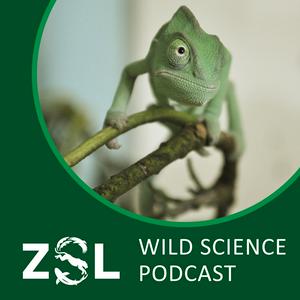What does it take to reintroduce an animal to the wild safely? How do we make sure that disease risk to existing populations, and to the animals being reintroduced, is mitigated? Hear from the Disease Risk Analysis and Health Surveillance Team (DRAHS) at ZSL who are working to give animals the best start possible as they return to the wild, and whose work has contributed to the recovery of over 30 species across the world. Overview 00:11 Harriet McAra, Introduction to episode 01:01 Dr Tony Sainsbury, DRAHS lead, ZSL 05:44 Clare McNamee, Wildlife Veterinarian and Research Associate, ZSL 10:40 Dr Sophie Common, Wildlife Veterinarian and Research Associate, ZSL 17:27 Georgie Gerrard, DRAHS Project Manager, ZSL 20:32 Becky Foskett, Pathology and Field Technician, ZSL 27:45 Dr Claudia Carraro, Wildlife Veterinarian and Research Associate, ZSL 32:31 Outro and further information Resources and references If there’s a topic you’d like to hear on a future podcast, or if you’d like to share your thoughts, email the ZSL Wild Science Podcast at:
[email protected] Check out our science and conservation work at: www.zsl.org/Science or www.zsl.org/Conservation Wildlife Disease Risk Analysis and Health Surveillance: https://www.zsl.org/what-we-do/projects/wildlife-disease-risk-analysis-and-health-surveillance More about dormice health monitoring: Hazel dormice - People's Trust for Endangered Species (ptes.org) & National Dormouse Monitoring Programme (NDMP) (ptes.org) More about our Extinct in the Wild work: Extinct in the Wild | The Zoological Society of London (zsl.org) More about chequered skipper conservation: Chequered Skippers - Butterfly Conservation Vernet, M., Trask, A.E., Andrews, C.E. et al. Assessing invasion risks using EICAT-based expert elicitation: application to a conservation translocation. Biol Invasions 26, 2707–2721 (2024). https://doi.org/10.1007/s10530-024-03341-2 Gibson, L., Shadbolt, T., Paul, P. et al. Prevalence and Molecular Analysis of Encephalomyocarditis Virus-2 in the Hazel Dormouse. EcoHealth 21, 112–122 (2024). https://doi.org/10.1007/s10393-024-01680-z Get in touch Email
[email protected] with your questions, comments, and thoughts for future episodes! Tweet us @ZSLScience with the hashtag #ZSLWildScience Follow us on Facebook @ZSLScienceAndConservation

